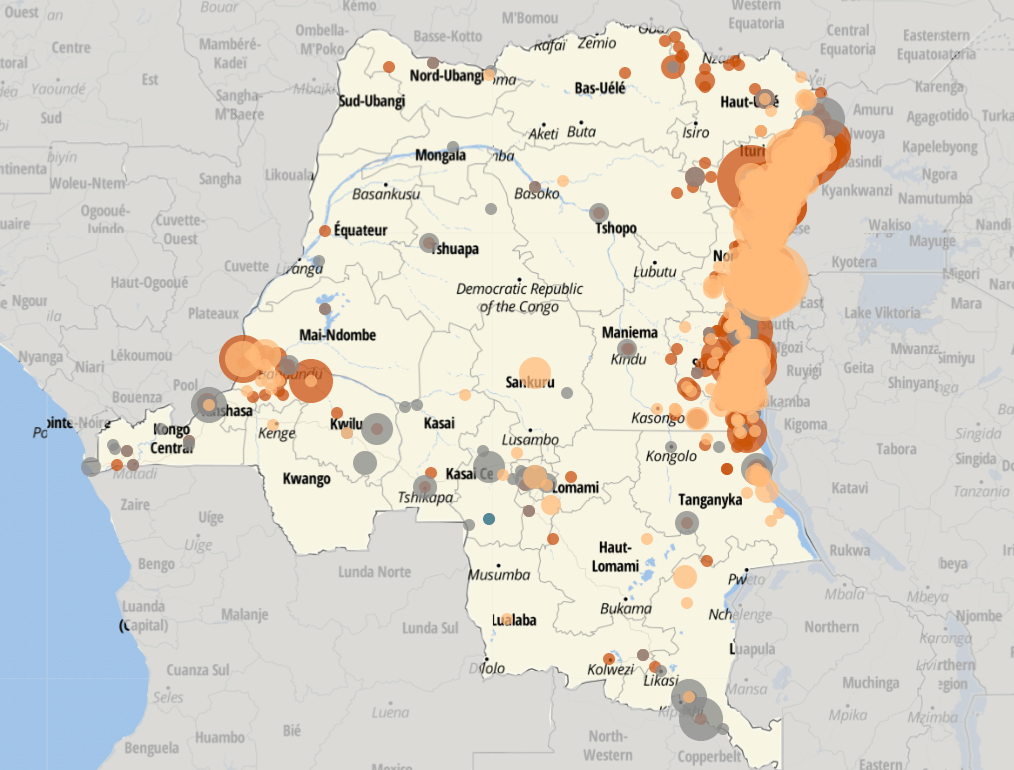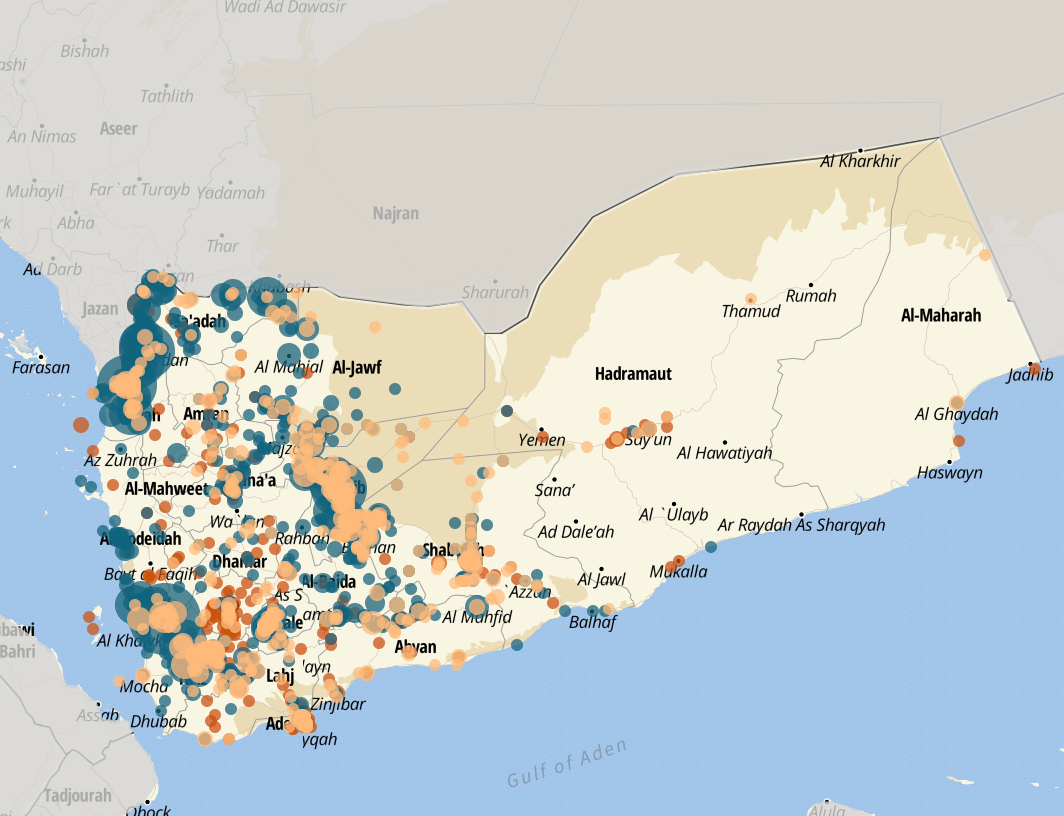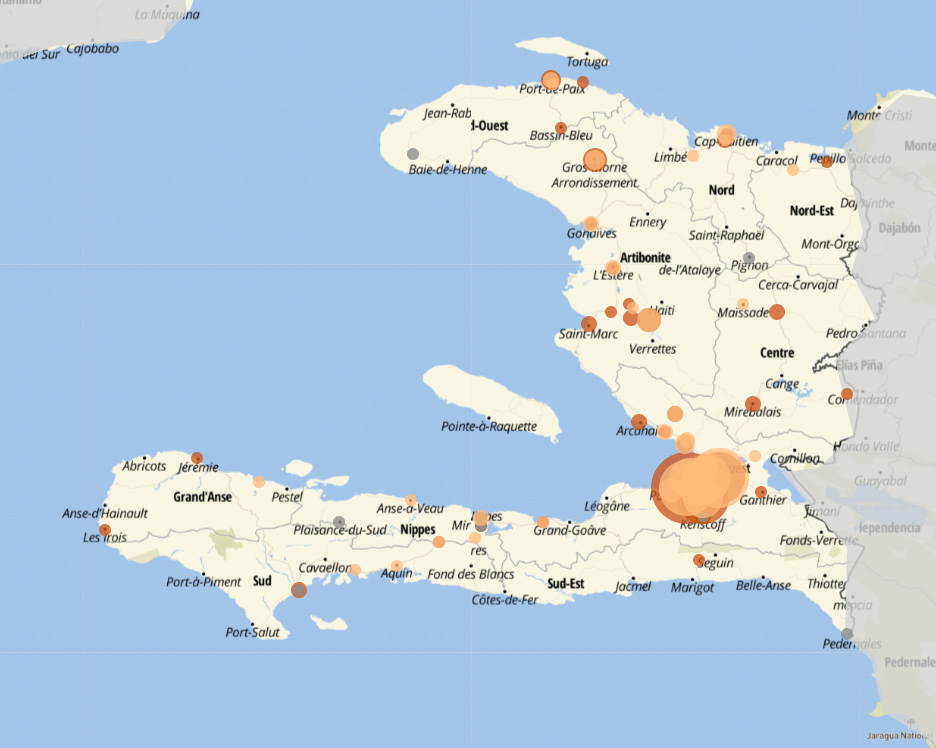Foreword
The invasion of Ukraine has cast a shadow of uncertainty on global security. Russian President Vladimir Putin defied the expectations of many and attacked a sovereign country at its borders after a years-long military build-up. To this day, Ukrainian forces, backed by Western political and military aid, have prevented Russian troops from capturing Kyiv and taking control of the entire country. Yet, Moscow’s actions – which include indiscriminate bombings, summary executions, and enforced disappearances, likely amounting to war crimes – have killed tens of thousands and devastated the country’s infrastructure. With millions forced to flee Ukraine, the war’s consequences have stretched far beyond Europe, prompting dramatic shifts in other crisis areas around the world, from Africa to the Middle East.
And the war in Ukraine was just one of the conflicts that escalated in 2022. Overall, political violence increased by 27% globally last year, with an estimated 1.7 billion people exposed to its effects. A wide range of actors contributed to the spike in violence, including state forces, government-backed militias, non-state armed groups, criminal organizations, and mercenary outfits, which have perpetrated violence against other armed actors as well as civilians – often with the promise of impunity. These conflict agents share a common desire to maximize power, either globally or locally, and do not operate in a vacuum. The proliferation of violent actors represents a failure to create governance structures that can nurture stability and prosperity, and promote peaceful resolutions for the world’s most severe conflicts.
In ACLED’s new Conflict Watchlist, we identify 10 crisis areas that are likely to evolve in the coming year, both for better and for worse. The Watchlist goes beyond a snapshot of violent hotspots – instead, these cases represent a sample of some of the world’s most complex crises, where a combination of subnational, regional, and international dynamics are likely to produce major shifts in each conflict’s trajectory in 2023. They include local and national conflicts, as well as transnational conflict spaces encompassing multiple countries and cutting across borders.
To begin, we return to Ukraine. Initial predictions by the Russian government that its troops would take Kyiv within a few days of the invasion were quickly dispelled. Ukrainian forces have held off Russian advancements and launched major counter-offensives in the country’s southeast. The two armies have now prepared for a prolonged conflict, which threatens to claim an even higher civilian toll and escalate further beyond Ukraine’s borders.
Read in full
Ukraine: A Looming Escalation as the War Enters Its Second Year
The war in Ukraine has also produced major shifts in the South Caucasus and Central Asia. Armenia and Azerbaijan are locked in a new round of conflict over the disputed territory of Nagorno-Karabakh. Russia’s waning influence in the regional security architecture has changed calculations on both sides, with Armenia growing increasingly disillusioned over the effectiveness of Russian peacemaking efforts as Turkey-backed Azerbaijan strengthens its grip on the region. Peace talks have failed to restore stability, and the risk of a violent escalation of the conflict is ever more present. In Central Asia, Kazakhstan, Tajikistan, and Uzbekistan were all faced with intermittent outbreaks of domestic unrest throughout the past year. These governments have not publicly backed Russia’s intervention, suggesting they are becoming wary of Russian expansionism in the region. Yet, even as they look to China for political and financial support, Russia’s lingering influence on the former Soviet Union’s Asian territories will likely continue to hold sway.
Read in full
South Caucasus and Central Asia: Threat of Sporadic Outbreaks of Violence Across the Region
At the same time, Russia is seeking to enlarge its political and military influence in the Sahel, where regional governments grapple with a decade-long Islamist insurgency. Mercenaries of the Russian private military company Wagner Group began operating in Mali in December 2021, while calls to replace French troops with Russian operatives were also heard in neighboring Burkina Faso and Niger. Local and foreign troops, however, have failed to deter the rise of the local franchise of the Islamic State, which has emerged as the dominant actor in the Liptako-Gourma. Its attempt to establish a pseudo-state in the tri-state border area will likely continue to intensify in 2023.
Read in full
Sahel: Geopolitical Transition at the Center of an Ever-Worsening Crisis
In 2023, two of Africa’s most populous countries will hold elections amid increasing violence. Nigeria will go to the polls in February to decide the successor of term-limited President Muhammadu Buhari. The run-up to the vote has been marked by widespread electoral violence, including attacks on election offices and staff, candidates, and political party supporters. This violence comes against the backdrop of multiple security crises that threaten local communities in the north and the south of the country. Taken together, these crises could depress voter turnout and affect the regular conduct of the elections.
Read in full
Nigeria: Historic Elections Threatened by Insecurity
In the Democratic Republic of Congo, political violence has raised concerns about a postponement of the December election, as with the 2018 vote. The conflict in the east of the country experienced yet another violent escalation, as the Rwanda-backed March 23 Movement launched a new offensive against Congolese and United Nations forces in North Kivu. Rwanda is under mounting pressure to cut off its support to the rebels, but regional mediation efforts have thus far failed to subdue the conflict.
Read in full
Democratic Republic of Congo: Rising Tensions with Rwanda Amid Escalating Violence and the December Elections
In Yemen, a nationwide truce agreed to in April 2022 expired after six months, but full hostilities have not yet resumed, with negotiations ongoing between the Houthis and Saudi Arabia. Regional powers brokered the formation of a presidential council, whose authority is limited by internecine fighting with the southern separatists. A return to all-out war hinges on the success of the Houthi-Saudi talks, but the prospects of a comprehensive peace agreement remain elusive.
Read in full
Yemen: Uncertain Trajectory Amid Truce Collapse and Ongoing Negotiations
The Kurdish Regions were also a hotbed of violent tensions last year. Turkey intensified military operations against Kurdish militants in northern Iraq and Syria, while unrest-wracked Iran launched attacks on Iraq-based Kurdish opposition armed groups as well. Turkish President Recep Tayyip Erdogan, who will likely face a tight race in the June presidential election, may leverage his influence to launch a military offensive in northern Syria. Internal dynamics in both Turkey and Iran, as well as regional power shifts, suggest that the Kurdish regions are at a high risk of a violent escalation in 2023.
Read in full
Kurdish Regions: High Risk of Violent Escalation and Domestic Turmoil
Resistance to military rule in Myanmar continued in 2022, with the junta resorting to increasing levels of violence against civilians. Military repression has contributed to strengthening the cohesion of resistance groups, which have announced their intention to continue the fight. As the military looks to stage sham elections in 2023, resistance to the ruling junta will likely persist and possibly intensify.
Read in full
Myanmar: Continued Opposition to the Junta Amid Increasing Civilian Targeting by the Military
In Colombia, a lull in the conflict between the national government and the myriad armed groups active in the country did not bring lasting peace. Killings of social and political leaders continued in 2022, as the country reached new record highs of violence against civilians. Former rebel fighter Gustavo Petro, who was inaugurated as president in August 2022, announced a suspension of military operations, although its full implementation remains uncertain.
Read in full
Colombia: Peace Talks, Worsening Violence, and a Deeply Fragmented Conflict Landscape
Finally, Haiti continues to face a political vacuum and a rapidly deteriorating security situation. Prime Minister Ariel Henry has ruled by decree since the assassination of President Jovenel Moise in 2021, while the mandates of all democratically elected bodies in the country have expired. Gangs have taken advantage of the instability, seizing control of strategic areas and securing additional sources of income. An exit from the political crisis remains a distant prospect amid calls for the deployment of an international armed force to restore order, and attempts to wrestle control of the transition.
Read in full
Haiti: Expanding Gang Activity Amid Persisting Political Instability
Conflict will not be limited to these 10 cases in 2023. Ongoing conflicts in the Horn of Africa, heightened gang warfare in Mexico, Central America, and the Caribbean, rising tensions in the occupied Palestinian territories and East Asia, and instability in South America and Afghanistan underscore the widespread and complex threat of political violence worldwide. These contemporary conflicts are often transnational in nature, combining local competitions over political, territorial, and economic authority with international influence. The changing nature of conflict calls for multifaceted analysis that examines local governance practices, the organization of armed actors, and strategies behind the use of violence. ACLED sets out to continue this work in 2023.
For special coverage of the conflicts in Ethiopia and Mozambique, see the weekly and monthly reports from our local observatories. For additional analysis of the global conflict landscape at the start of 2023, see the ACLED Conflict Severity Index and ACLED Year in Review: 2022.
Conflicts:
Following months of military build-up along the Ukrainian border, Russian forces launched a full-scale invasion of Ukraine on 24 February 2022. The expansion of armed conflict that followed led to the highest level of political violence recorded in a country by ACLED in 2022. The rise of violence in Ukraine was accompanied by a staggering human cost, with Ukraine also ranking as the country with the highest reported fatality count last year.

For multiple countries in Central Asia and the South Caucasus, 2022 was marked by ongoing violence stemming from decades-long disputes, further exacerbated by domestic turbulence and the ongoing armed conflict between Russia and Ukraine.

The Sahel is entering its second decade of conflict since the crisis began in 2012, gripped in an ever-growing cycle of political instability and escalating violence. In Burkina Faso and Mali, violence in 2022 reached the highest levels ever recorded by ACLED.

Nigeria’s federal elections constitute a watershed moment for the country’s democratic history. President Muhammadu Buhari is barred from running for a third term through term limit legislation, while the end of his presidency marks the longest democratic stretch since independence.

The presence of over a hundred armed groups engaging in multiple conflicts over territorial and resource control continued to create instability in the Democratic Republic of the Congo (DRC) in 2022. While many of these conflicts have been active for years, the sudden onset of inter-communal clashes in Mai-Ndombe province and surrounding areas over land taxation was a potent reminder of the volatility of conflict dynamics in the DRC.

Among the deadliest conflicts of the twenty-first century, the war in Yemen has caused at least 158,000 reported fatalities from political violence between January 2015 and December 2022, including over 15,700 civilians killed in direct attacks.

The Kurdish regions — an area spanning northern Syria and Iraq, southeastern Turkey, and northwestern Iran — continued to be the scene of heightened tensions in 2022. Notably, violence significantly increased in northern Iraq and Syria as Turkey intensified its military operations against Kurdish militants, while Iran stepped up attacks on opposition Kurdish armed groups based in northern Iraq.

In the face of continued armed and unarmed resistance to the coup it set in motion two years ago, the Myanmar military has increasingly resorted to targeting civilians as it fails to consolidate control over the country. Civilians have been targeted not only on the ground but also through increased military airstrikes.

The security situation in Colombia continued to deteriorate in 2022, with worsening political violence and increasing violence against civilians. Despite recent attempts by the new leftist government of President Gustavo Petro to engage with armed groups, Colombia continues to struggle under the strain of a deeply fragmented conflict landscape that supports a myriad of armed groups, including Revolutionary Armed Forces of Colombia (FARC) dissident groups, the National Liberation Army (ELN), and the Gulf Clan.

In 2022, violence in Haiti reached unprecedented levels and became far deadlier, with reported fatalities more than doubling compared to the year prior. The upsurge in violence stems from intensifying turf wars between gangs, with deadly repercussions for civilians.

